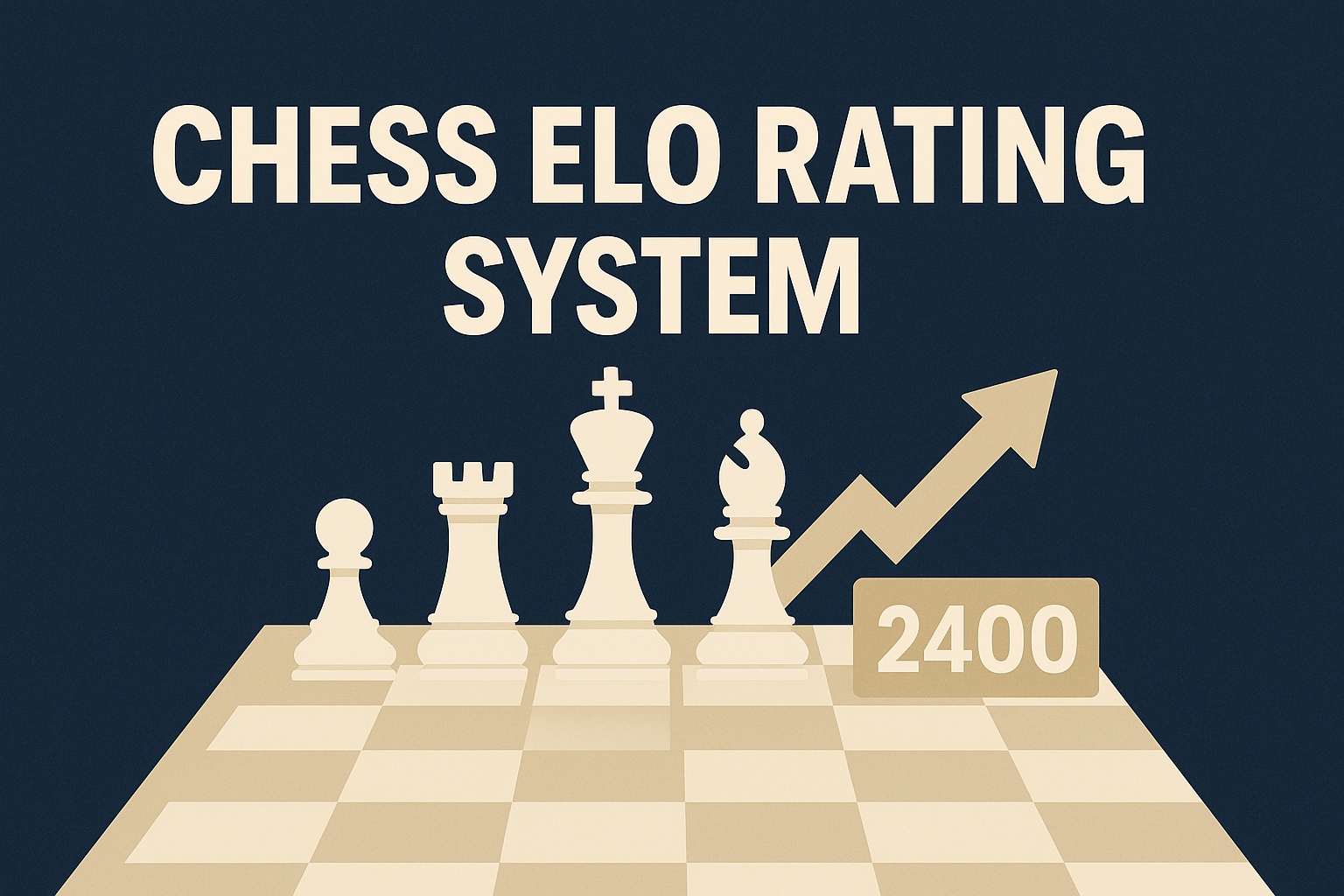Chess Elo Rating System
Whether you’re a seasoned player climbing the tournament ladder or a parent trying to make sense of your child’s chess journey, you’ve likely come across the term Elo rating. But what does it truly mean, how is it calculated, and why does it matter so much in the world of chess?
In this comprehensive guide, we’ll explore the chess Elo rating system in depth — covering everything from rating calculation to improving your score, and even how different platforms treat ratings differently.
What Is the Elo Rating System in Chess?
The Elo rating system is a mathematical method used to estimate the relative skill levels of players in two-player games. It was developed by Arpad Elo, a Hungarian-American physics professor, and officially adopted by FIDE (the World Chess Federation) in 1970.
Every chess player begins with a provisional rating, and as they play more rated games, their rating becomes more stable. Elo ratings are dynamic — they rise when you win and fall when you lose, but the change depends on the strength of your opponent.
How Is Chess Elo Rating Calculated?
At the core of Elo lies a statistical formula. It compares your expected result with your actual performance. The basic formula is:
Rating = Old Rating + K × (Actual Score – Expected Score)
- Expected score is based on the rating difference between you and your opponent.
- Actual score is 1 for a win, 0.5 for a draw, and 0 for a loss.
- K-factor determines how much your rating changes (common values are 10, 20, or 40).
Example:
If you’re rated 1400 and you beat a 1600-rated player, your rating increase will be significantly more than beating someone with a lower or equal rating.
Different Types of Elo Ratings: FIDE, USCF, and Online Platforms
One of the biggest misconceptions in chess is that all ratings are equal. That’s not true. Here’s a quick breakdown:
FIDE Rating
- Used internationally for over-the-board tournaments.
- Considered the most credible rating system for professional players.
USCF Rating
- Used for players in the United States.
- Typically inflated by 50 to 100 points compared to FIDE ratings.
Online Ratings (Chess.com, Lichess)
- Each platform uses its own algorithm (often Glicko or Glicko-2).
- Ratings here are generally higher and can vary significantly.
- A player rated 1700 on Chess.com might have a 1400 FIDE rating.
Chess Elo Rating Ranges and What They Mean
Understanding where you stand helps set realistic goals. Here’s a rough idea of what various ratings indicate:
| Rating Range | Player Level |
|---|---|
| Below 1000 | Beginner / New Player |
| 1000–1400 | Casual / Club Player |
| 1400–1800 | Intermediate / Competitive |
| 1800–2200 | Advanced / Candidate Master |
| 2200–2400 | National Master / Expert |
| 2400+ | International Master (IM) |
| 2500+ | Grandmaster (GM) |
For children, even a 1300 rating at age 9 can be exceptional. Context always matters when interpreting ratings.
Common Misconceptions About Chess Ratings
Let’s clear up some myths around the Elo system:
Myth 1: A Higher Elo Means You’re Smarter
Elo measures performance, not intelligence. A player with a high Elo may simply have more experience, better training, or greater consistency.
Myth 2: Elo Is Always Accurate
Elo can lag behind a player’s true level, especially for children or fast improvers. It’s also subject to rating inflation and deflation over time.
Myth 3: Online Ratings Equal Over-the-Board Ratings
They don’t. Online chess is often faster, more casual, and algorithmically different. Elo and Glicko function differently.
How to Improve Your Elo Rating (For Kids and Adults)
Improving your chess rating isn’t just about playing more — it’s about playing smarter. Here are proven strategies:
- Analyze Your Games – Learn from mistakes using engine analysis, but focus on understanding the reasoning behind moves.
- Master Tactical Patterns – Most amateur games are lost due to tactical blunders.
- Practice Regularly – Play classical time controls to improve decision-making and stamina.
- Study Endgames and Openings – Endgames sharpen fundamentals; openings build early confidence.
- Hire a Coach or Join a Program – Structured guidance can boost your rating faster than trial and error.
- Play Tournaments – Only rated games affect your Elo. Competing regularly helps develop focus and confidence.
Elo vs. Glicko Rating Systems
Some platforms like Lichess and Chess.com use Glicko or Glicko-2 instead of Elo. These systems account not only for win/loss results but also for rating deviation (how uncertain the system is about your skill level).
- Glicko updates faster with fewer games.
- It’s more responsive for fast time controls and online formats.
- Elo is more stable and used primarily in traditional over-the-board events.
Knowing the difference helps players interpret online versus official ratings more accurately.
Final Thoughts: Use Elo as a Tool, Not a Trophy
The Elo rating system is an excellent tool for tracking improvement and comparing competitive performance. However, it is not an absolute measure of your chess potential or intelligence. Use your rating as motivation — not as a label.
If you’re a parent, focus on progress and learning over numbers. If you’re a player, aim to improve your decision-making, discipline, and psychological strength — because those are what truly create long-term success in chess.






